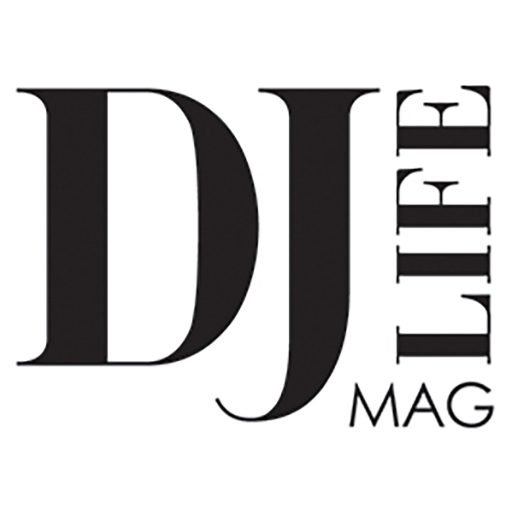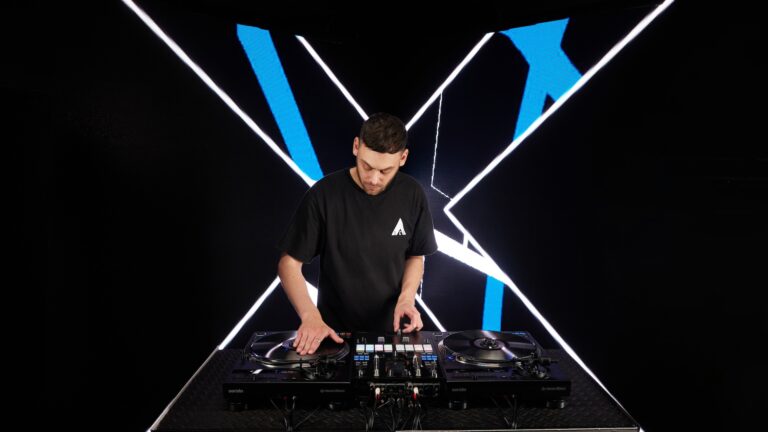As DJ gear continues to evolve tremendously, controllers have incorporated more and more features, and all-in-one units have flourished.
Over the last few years, DJ gear has evolved tremendously. Controllers have incorporated more and more features, and all-in-one units have flourished – with some even going so far as to offer built-in speakers and battery power.
However, considering all types of DJ gear, vinyl turntables as a class may have undergone the least evolution in recent years. Many turntables in 2024 look very much like turntables from 2014, which themselves look like turntables from 2004. It seems Pioneer DJ wants this to change, and its latest turntable, the PLX-CRSS12, has the potential to be a big leap forward for the market segment.
Launched in mid-2023, the CRSSD12 looks – at first glance – like a traditional DJ-oriented turntable. But, despite these similarities, it’s packing one big ace up its sleeve (more on that later). It shares visual elements from Pioneer DJ’s own very-popular PLX-1000, which was released just under a decade ago.
From the labels and buttons, the turntable is designed to be oriented vertically or “battle-style.” It’s powered by a three-phase brushless DC motor connected via direct drive to a full-size 12-inch platter.
At the back, there is a power switch, a USB-C connection, a port for grounding the turntable, and a phono-level output on RCA jacks. The USB-C allows MIDI connection for the performance pads and provides data for the small OLED display on the top (more on both later).
On the left side, there’s a Kensington lock and an IEC power connection. Personally, I would’ve preferred to have the power supply connection by the outputs on the back. (Note from Pioneer DJ: There is cable routing [space near the top-left corner leg] that can route any cable from any position to the front or side. This was by design.) The current orientation makes connecting the right-hand-side turntable a bit harder when it’s positioned directly next to a mixer or another piece of hardware to the left. On the front, there is a three-position switch to control the electronic brake and how quickly the record stops playing.
On the top of the unit, there is the typical turntable fare – albeit with some added digital flare. At center stage is the full-size 12-inch platter. In my testing, I found the platter to feel rock-solid and steady, just like any other professional-grade DJ turntable.
At the bottom right, there are four small performance pads. They become active when the turntable is connected via USB to a laptop running compatible DJ software: most likely, Serato DJ or rekordbox. (Note from Pioneer DJ: DJ software that’s compatible with Serato or rekordbox timecode, like Virtual DJ and algoriddim DJ Pro AI, can also utilize this.) They can control hot cues, samples, and even stems functionality. The full bank of eight hot cues can be activated by pressing the button marked “5-8,” which toggles between hot cues 1-4 and 5-8. It’s not the fanciest performance-pad system in the world, but it gets the job done. Personally, I would rather use a mixer with in-built performance pads – like a Pioneer DJ DJM S7/S11 or Rane Seventy-Two – to get optimal use of my hot cues and sampler.
Opposite from the performance pads are the transport controls. There is a start/stop button, which is brightly lit by an LED rim. Just next to it, there’s a button to turn the motor off – this replaces what is usually an elevated switch on other turntables. I don’t particularly lament the loss of the old-style motor switch, but it is worth noting. Pressing the start/stop button reactivates the motor if it’s been switched off. Above the transport controls are two buttons to switch between 33 RPM and 45 RPM. There’s a pop-up light to help illuminate the deck and calibrate platter speed.
At the top, things get a bit more interesting. As expected, there is a pitch slider with a long throw and accurate-feeling adjustment – two buttons to the left control step pitch and the tempo range. Just below the tempo slider there is a small OLED display that shows helpful information when the turntable is connected to DJ software, including what deck is being controlled and BPM/key information. Key settings for the turntable can also be adjusted here, including the torque level of the motor. There’s also a button marked needle mode. Pushing it switches the turntable from a typical vinyl turntable into effectively a spinning-platter controller for DJ software. When the turntable is in analog mode, the audio output comes from the record on the platter and what is being transmitted via the needle and tonearm. In digital vinyl mode, however, a magnetic clamp at the center of the platter reads how the record is spinning and transmits that information to a small computer inside the device. This computer then translates whatever the record is doing and outputs it as control tone signals that can be read by a DVS-capable mixer, controller, or device running Serato DJ Pro or rekordbox.
In this mode, the tonearm and needle do not need to make contact with the record – in fact, you don’t even need a record on the platter at all. In my testing, I found the digital vinyl mode even worked with just a pair of slipmats. One big advantage to this approach is that there will be no issues from needle flutter – this is especially helpful in DJ booths with a lot of vibration.

In my testing, the turntable felt good in both analog and digital vinyl mode. Using digital vinyl mode took a little getting used to. If anything, it was a bit spooky to use a turntable and hear sound come out of my mixer despite the tonearm being clipped in and the needle totally off the record. The sound quality of the turntable in analog mode is more than acceptable, and the platter felt rock solid as I played with it.
There are a couple situations where the CRSS12 makes a lot of sense. For one, I could see venues (or gear rental agencies) that routinely host DJs requesting turntables invest in these to have on hand. With them, they can support both analog and DVS DJs very easily. I could also see hardcore DVS users opting to use these, given the in-built DVS capability and the headaches such a system eliminates.
Having said that, a big question is whether the CRSS12 is worth the upgrade over a traditional analog-only turntable and running DVS “the-old-fashioned-way” with control vinyl. With a price of $1,399 as I write this review, the CRSS12 costs a bit more than Pioneer DJ’s own PLX-1000 and PLX-500 analog turntables. For some, this difference might be easily justifiable.
Another approach might be adding a device like Phase DJ to vinyl turntables to get a tonearm-free DVS setup. Phase consists of a cartridge that sits on the center of a turntable and reads the movement of a vinyl record on a turntable. The cartridge wirelessly transmits that information to an external box that outputs control tone to DVS-capable devices. Here, the Phase box is doing exactly what the CRSS12 does internally – of course, setting up the Phase system isn’t as easy as having the turntable directly output the control tone directly. (Note from Pioneer DJ: CRSS12 doesn’t require recharging a battery.)
Then, there are DJs who solely plan on controlling DJ software. In this case, a device with spinning platters, like a Rane Twelve mkII might make sense. Pioneer DJ’s own DDJ-REV7 controller features two 7-inch spinning platters and a battle-style mixer section on a single device for just a few hundred dollars more than a single CRSS12. The Rane One DJ controller packs similar features as well. This route does lack the versatility of a modular setup or the ability to play vinyl records. (Note from Pioneer DJ: An advantage of DVS over HID or MIDI control is that it isn’t locked to the latest version of the software. Because it uses timecode, you can even use it on older versions of DVS-capable software, including as old as Scratch Live.)
Conclusions: It must be said that the new PLX-CRSS12 by Pioneer DJ is a game-changer for turntables and is the tightest integration of DVS into a turntable ever. Using it feels like turntables have taken a huge leap forward and – perhaps finally – entered the 21st Century.


